From bell-bottoms to Instagram: the evolution of Maldivian fashion from the 1970s
Fashion isn't frivolous. It's a living archive of who we are.
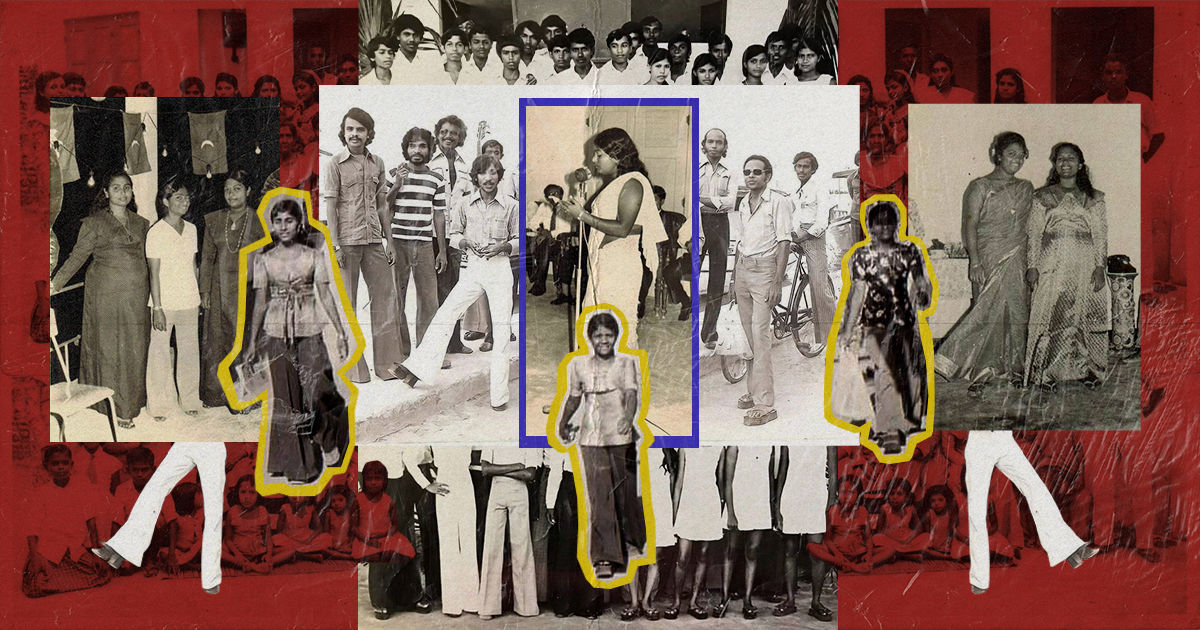
Artwork: Dosain
28 Jun 2025, 1:22 PM
When I sat down to write this piece, I was reminded of a remark someone made when I told them I studied fashion design. I was deeply passionate about it, I said. Their response? A dismissive scoff. “Fashion is useless," I was told.
Coming from a small island nation of just half a million people, such short-sighted views are not uncommon. Yet that pointed scorn did not discourage me. Instead, it became a quiet source of inspiration – strengthening my belief in the significance of fashion and deepening my connection to it.
That moment also brought to mind the now-iconic “Cerulean Blue” monologue from "The Devil Wears Prada," in which Miranda Priestly articulates how fashion filters into every corner of our lives – whether we acknowledge it or not. Because fashion isn’t just about clothes. It’s a mirror to our times, a form of silent expression, a response to politics, identity, culture, and change.
Consider the opulent fabrics of the Renaissance, signaling wealth and power, or the dazzling flapper dresses of the Roaring Twenties, reflecting liberation and rebellion. Post-World War 2, Christian Dior’s revolutionary “New Look” with its voluminous skirts and abundance of fabric was a bold response to the austerity and rationing of wartime. Each style moment was shaped by its era, and in turn, helped shape it.
And much like world history, Maldivian fashion has evolved through significant political, social, and cultural shifts. While traditional garments such as the libaas, feyli, and mundu are core to our identity, I will focus on the transformations that began in the 1970s – a pivotal decade marking our transition into modernity.
A new era
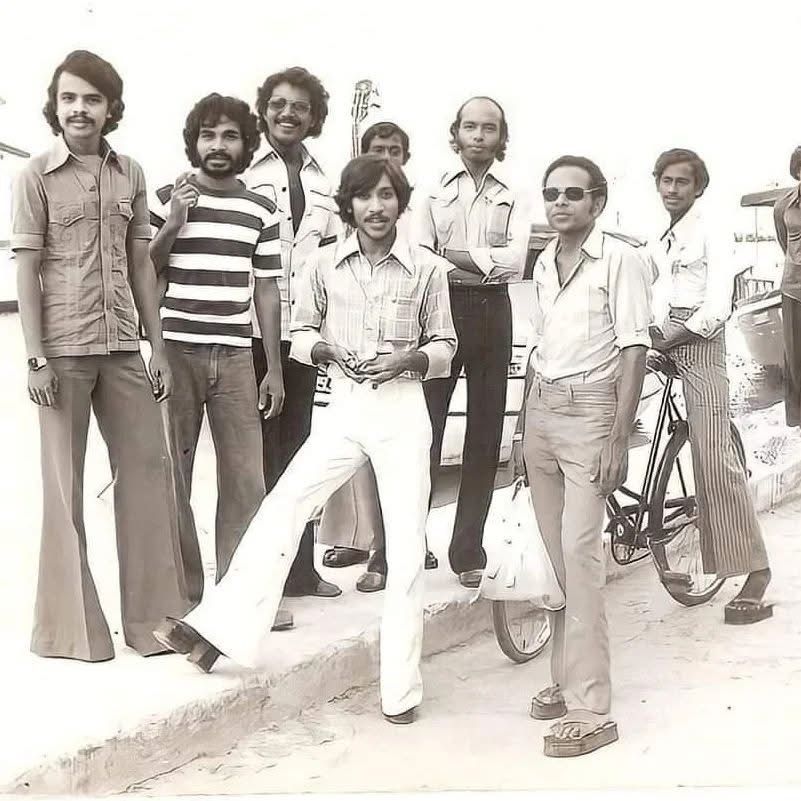
The 1970s stand out as one of the most expressive and stylish eras in Maldivian fashion history. Flipping through photo albums from that time – black and white images of youth in bell-bottoms, sharp collars, and platform shoes – one cannot help but admire the effortless glamour and charisma carried by both men and women.
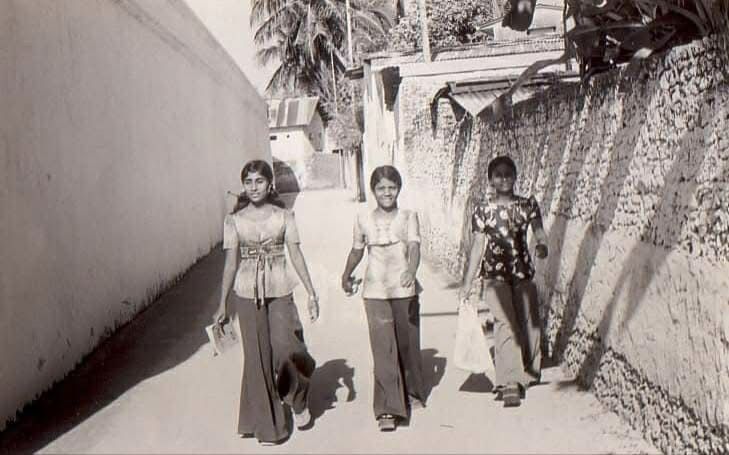
Men were particularly distinct in their style: body-hugging shirts unbuttoned to the chest, gold chains gleaming, platform shoes or the iconic boa faivaan on their feet. It was a kind of confidence and flair that, even today, feels unmatched.
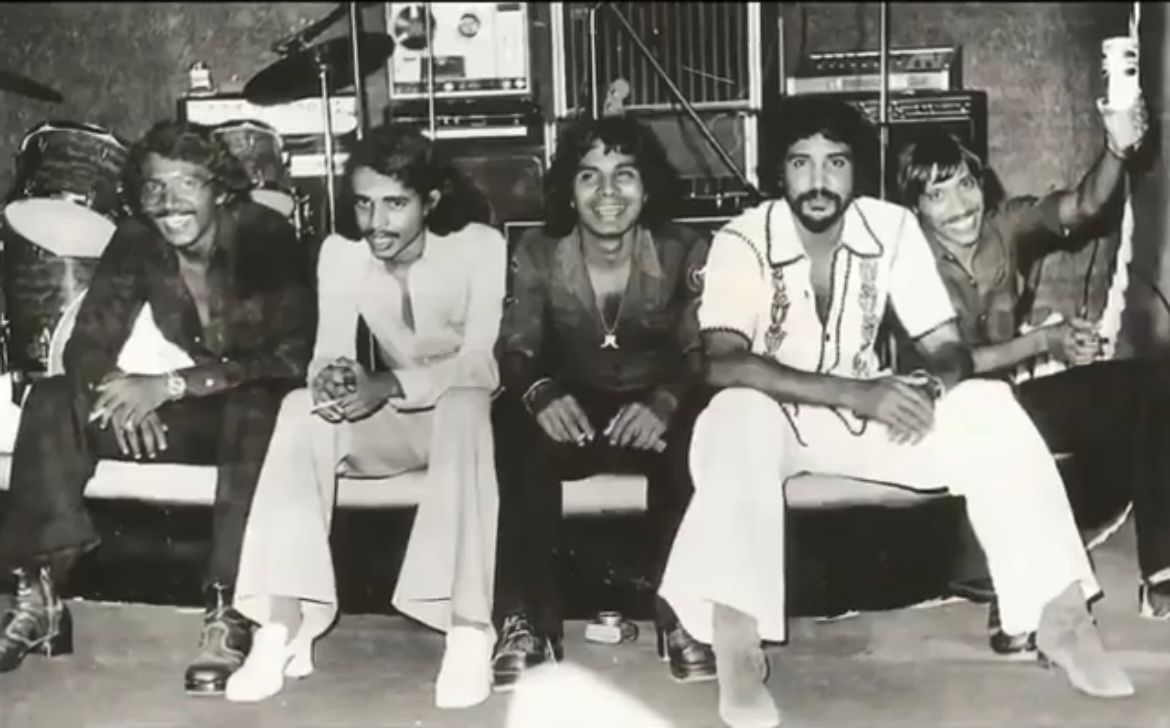
This decade marked a significant shift. Following independence from the British in 1965, the Maldives entered a period of development. In 1972, tourism officially began, ushering in exposure to modernity and international culture.
The global 70s aesthetic – from disco glam to hippie subcultures – found resonance here. Bell-bottoms, wrap dresses, paisley prints, and wide collars defined the look. Fashion was bold, expressive, and unapologetically experimental.

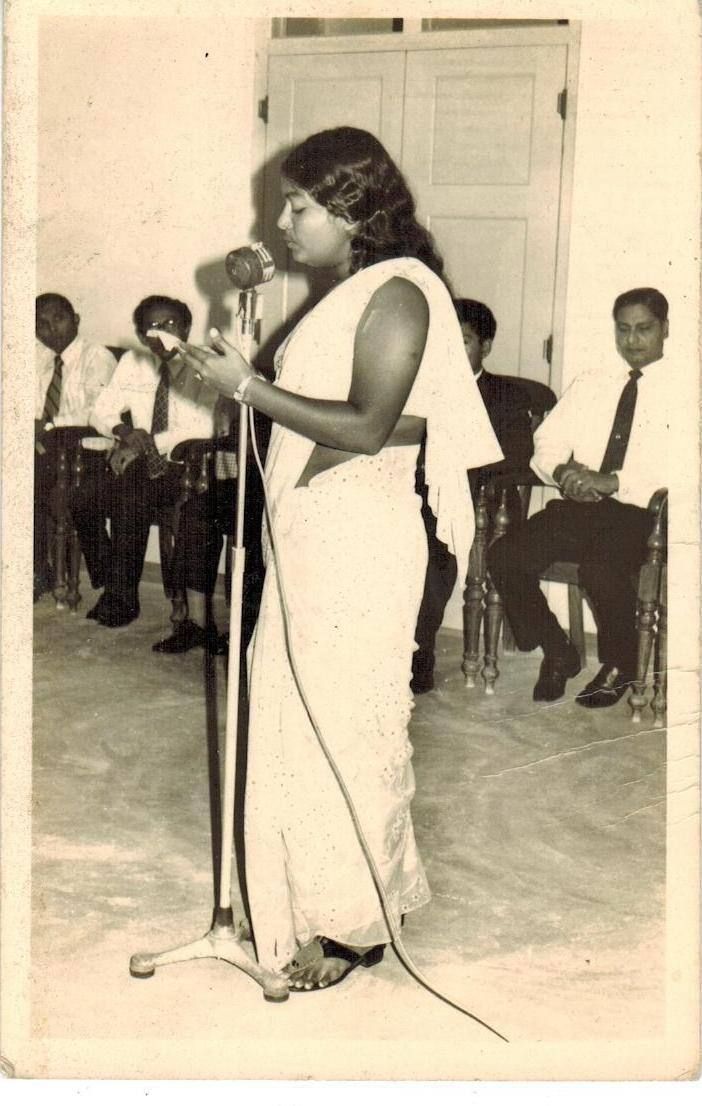
Yet, traditional clothing still held a strong presence. At the beginning of the decade, many Maldivians still wore faaskuri hedhun, dhigu hedhun, and libaas. Men often wore the mundu. Wives of government officials were frequently seen in sari, reflecting influence from India and Sri Lanka. Some women even wore salvaar kamees, a South Asian outfit featuring a long sleeveless tunic (kameez), trousers, and a scarf (dupatta).
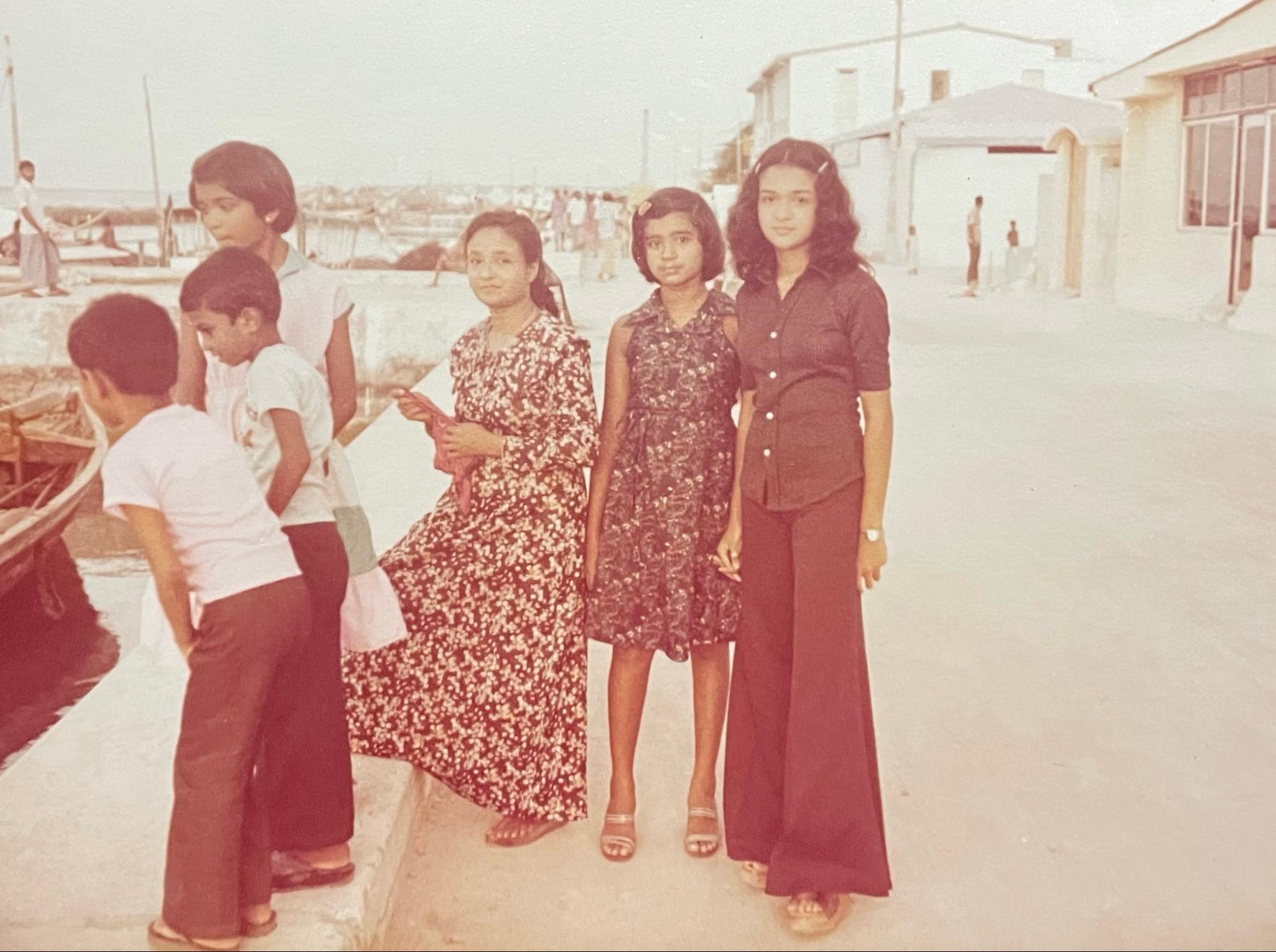
According to local historian Alaa Didi, the shift dress, popular in the mid-60s, evolved into the bohemian-style maxi dress by the mid-70s. “From the mid-70s onwards,” he notes, “most men wore pants and shorts instead of the traditional sarong and firihenunge libaas – a wide-collared long sleeve shirt.”
Columnist Dr Abdulla Waheed, in an article on One Online in June 2021, notes that ready-made bell-bottoms were likely sold in the shops along Chaandhanee Magu in Malé.
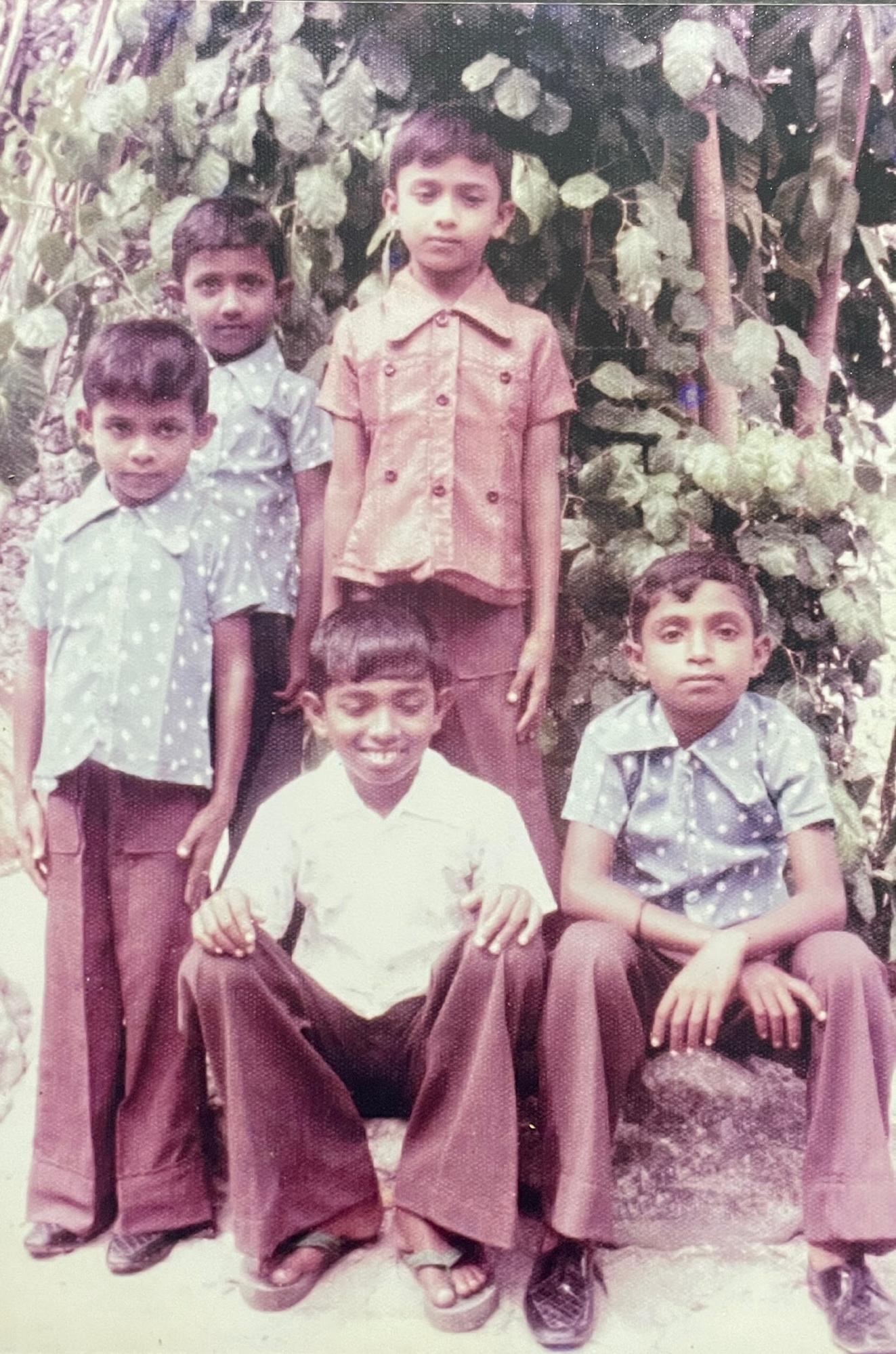
Fashion designer and stylist Mappu fondly recalls this era, growing up with ABBA and Boney M, strutting to school in Italian leather platform shoes. Popular bands like the Olympians elevated local pop culture, performing in paisley ponchos and suede shoes. Their look defined a generation and continue to represent a peak of Maldivian style.
1980s: Bold statements and cultural crossovers
Globally, the 1980s were about excess – oversized silhouettes, shoulder pads, bold colours, and big hair. In the Maldives, this was a time of accelerating change as tourism expanded and life rapidly modernised.
Yet traditional dresses still played a significant role. As historian Mohamed Naajih explains, “Even in the 1980s and 1990s, women typically wore libaas and dhigu hedhun, but not the hedhunburi for traditional events.” He adds, “Today, some consider hedhunburi a cultural dress, pairing it with feyli and fattaru bai, but originally it was worn by those too poor to afford proper libaas or fattaru bai.”
The country's economic development – including improved access to education and healthcare – was mirrored in fashion. Those pursuing higher education or living in urban areas were more likely to adopt Western styles: jeans, trousers, frilly blouses, shoulder-padded jackets, and denim.
Through video rentals, Maldivians were introduced to Hollywood films and global icons like Princess Diana, whose fashion choices deeply influenced women. Fitness videos and films like "Flashdance" also left their mark.
This era also saw the early introduction of the hijab in daily wear. According to Dr Abdulla Waheed, the rise of the hijab in the 1980s coincided with visits from Islamic scholars who encouraged it. There are even reports suggesting that foreign organisations may have incentivised this movement, rewarding scholars for every woman they convinced to don the hijab. At the time, the hijab was largely worn as a religious duty rather than a fashion statement, and was mostly adopted by older women.
1990s: A cultural awakening
As someone who grew up in the 1990s, this era holds a deeply nostalgic place in my memory. I still remember being dressed by my parents in velvet tops, ankle boots, and choker necklaces for birthday parties and family gatherings. CD players blasted our favourite tracks from 90s pop bands, and festivals, music shows, and art exhibitions were slowly becoming part of the social fabric.
Globally, the 1990s marked a major shift in fashion, moving away from the bold extravagance of the 80s toward a more relaxed, minimalist, and casual aesthetic. Key trends of the decade included grunge, clean silhouettes, and athletic wear, heavily influenced by subcultures such as hip-hop, punk, and the emerging preppy style.
In the Maldives, too, this translated into a more modern and easygoing approach to style, reflecting a subtle but noticeable shift in public attitudes and personal expression.
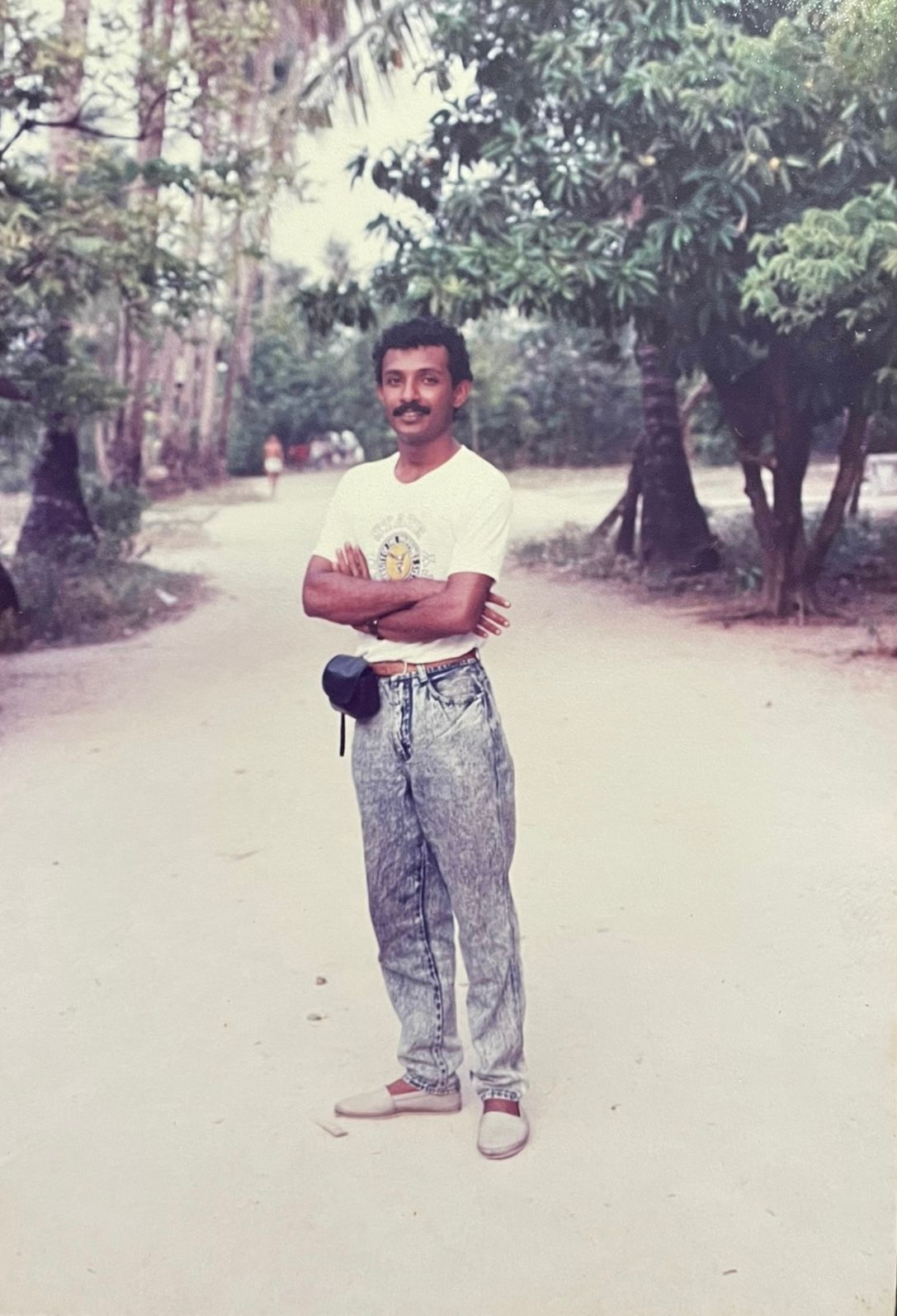
This was also a formative period for Maldivian creative industries. Television, film, and music were experiencing a quiet but steady evolution. With limited resources but growing creative freedom, musicians and artists began to explore new genres and visual styles. This was the golden age of artists like Ali Rameez, Sameeu, and Fathey, who, through their pioneering music videos, expanded the boundaries of local creativity and helped define a new wave of popular culture in the country.
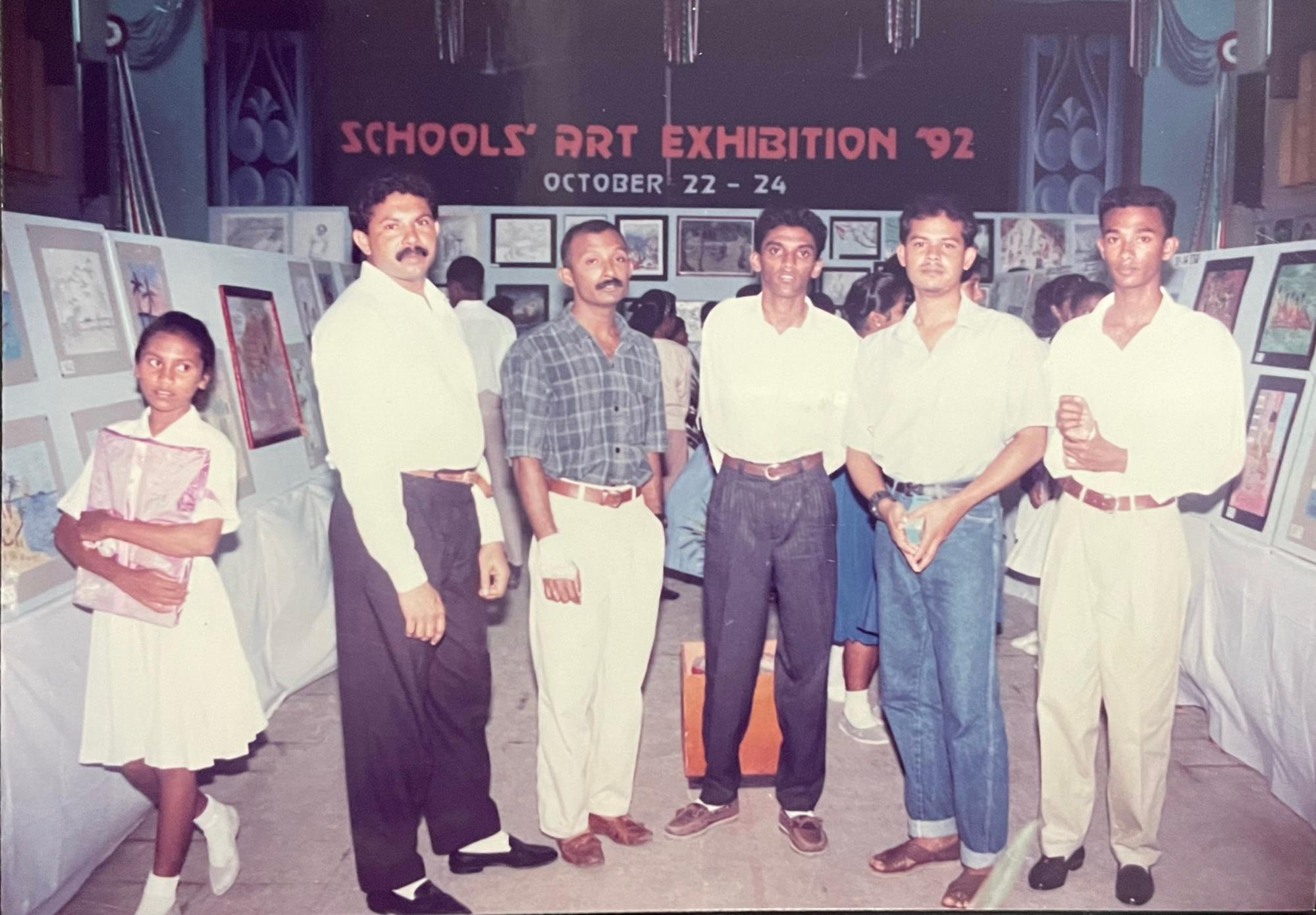
The 1990s also introduced He n She – one of the most talked-about fashion and talent shows of its time. Held in 1995, it brought together a group of confident, stylish young men and women who graced the runway in wrap skirts, bodysuits, oversized shirts, and graphic t-shirts. It was the first show of its kind in the Maldives, echoing the energy and spectacle of international fashion runways of the era, when global supermodels like Cindy Crawford, Naomi Campbell, and Christy Turlington were at their peak. He n She not only showcased emerging style but also unlocked a creative potential in local fashion that many may not have realised existed.
In many ways, the 1990s marked another high point for fashion and cultural expression in the Maldives – a decade defined by experimentation, confidence, and a sense of liberation.
Early 2000s: A turning point in fashion, faith, and identity
While popular imagination painted the 2000s as a futuristic era filled with flying cars and technological marvels, reality was far more grounded, especially in the Maldives, where the progression toward modernity was still unfolding at its own pace. Though the country had made notable economic strides by the late 1990s, primarily through the booming tourism and fishing industries, the early 2000s were a time of both quiet exploration and profound change.
By the end of the millennium, the Maldives had transitioned from a relatively quiet island nation to a sought-after five-star tropical destination. Yet culturally, the search for a modern Maldivian identity, particularly in fashion, was still evolving.
The early aughts adopted a more minimal and contemporary approach compared to the vibrant eclecticism of the 1990s. Fashion trends of the time included low-rise boot-cut jeans, crop tops, metallics, and all things sparkly – hallmarks of global Y2K aesthetics that found their way into local wardrobes.
However, this period was also marked by significant political and social shifts. The 1999 parliamentary elections were followed by waves of civil unrest and anti-government protests, signaling the beginning of a politically volatile chapter in the country’s history. Amid this climate of uncertainty, the devastating Indian Ocean tsunami struck in December 2004. Entire islands were ravaged and many lives were lost. The government estimated that the disaster had set national development back by two decades.
Beyond its physical and economic toll, the tsunami brought about a profound shift in the religious and cultural landscape of the Maldives, one that would shape fashion and identity for years to come. The disaster was interpreted by many – both in the Maldives and in other affected Muslim-majority nations such as Indonesia and Malaysia– as divine punishment for neglecting religious obligations or leading materialistic lives.
In response, there was a notable increase in religious observance. Many individuals began to adopt more conservative modes of dress as a reflection of renewed spiritual commitment. Women increasingly wore the hijab, niqab (face veil), and the black jubbah, while men embraced more modest Islamic attire. The collective trauma of the disaster, compounded by ongoing social and economic challenges, created an environment in which conservative interpretations of Islam became more resonant, and this inevitably influenced the aesthetic and cultural norms that followed.
Post-pandemic to present: Digital influence and cultural drift
The aftermath of the Covid-19 pandemic marked another shift in Maldivian fashion. With global lockdowns came a surge in “revenge spending,” where people invested in fashion, luxury, and personal style as a form of self-expression and recovery.
Social media platforms like TikTok and Instagram have allowed young Maldivians – particularly those aged 18 to 27 – to experiment with diverse fashion identities, both modest and bold. Style is more personalised than ever before.
The pandemic years also gave rise to independent local brands, from clothing to jewellery and home decor, as individuals began turning their creativity into entrepreneurship.
Yet with this explosion of modern and Western-influenced fashion, there’s been a noticeable disappearance of traditional clothing. The libaas, dhigu hedhun, and mundu are no longer part of daily life, and many younger people don’t even know what these garments are called.
This, perhaps, is one of modernity’s greatest losses – the quiet fading of cultural memory.
Stitching the past to the present
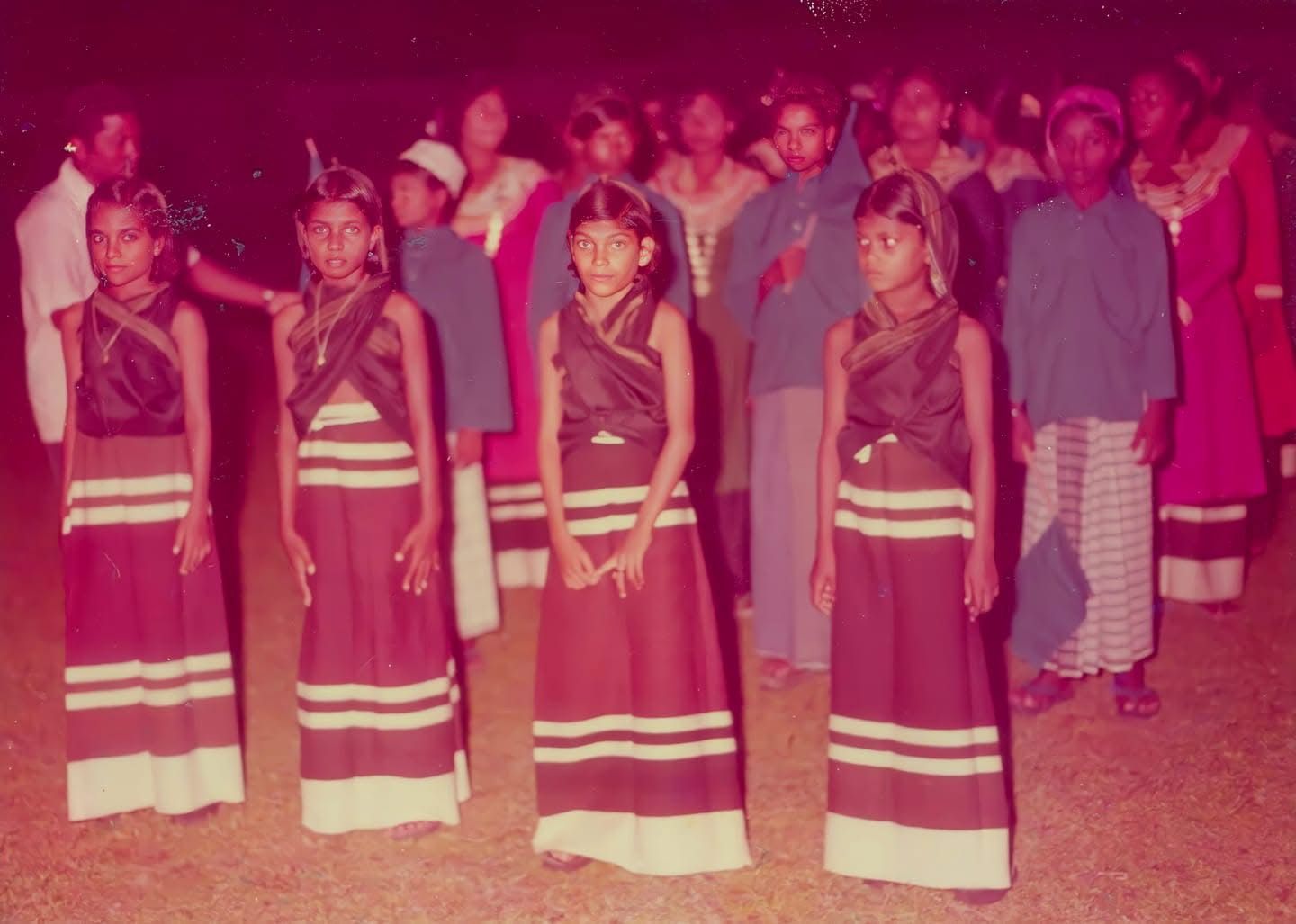
The evolution of fashion in the Maldives is a reflection of our nation’s journey – from isolation to global connectivity, from tradition to experimentation, from conformity to self-expression.
While we celebrate the creative energy and individuality of today’s youth, we must also recognise the importance of preserving our cultural identity. Fashion isn’t frivolous. It is a living archive of who we were, who we are, and who we are becoming.
As the world continues to shift, may we find a way to hold on to the threads of tradition while weaving in the new.
Discussion
No comments yet. Be the first to share your thoughts!
No comments yet. Be the first to join the conversation!
Join the Conversation
Sign in to share your thoughts under an alias and take part in the discussion. Independent journalism thrives on open, respectful debate — your voice matters.




